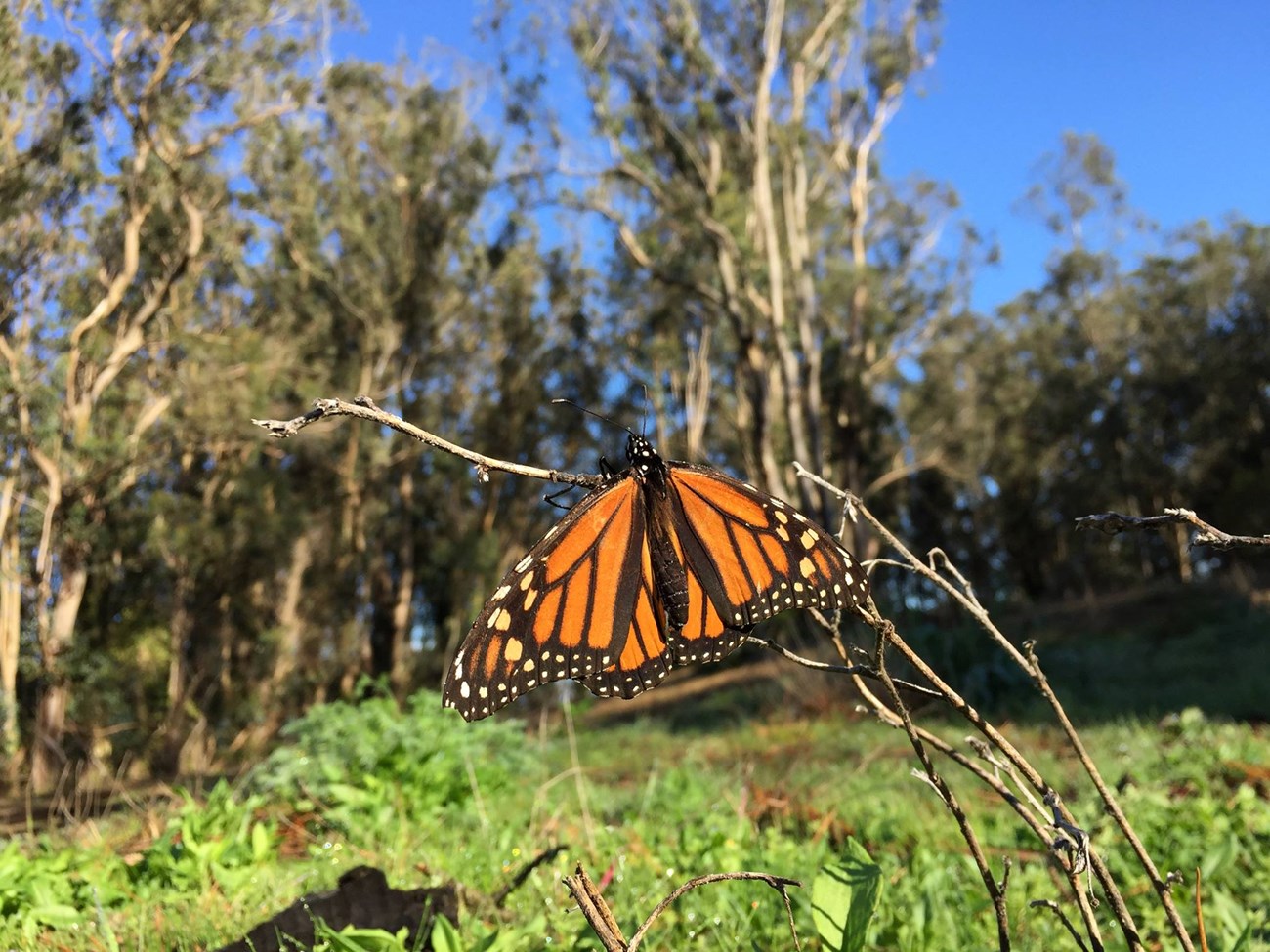Last updated: September 3, 2019
Article
A Closer Look at the 2018-2019 Western Monarch Population Crash, and How to Help

Presidio Trust / Yoni Carnice
August 2019 - By the mid-2010s, western monarch butterfly numbers had declined by 97% compared to what they were in the 1980s. Then, counts during the winter of 2018-2019 revealed a further 86% decline from the previous winter, leaving the population at just 0.6% of its former size, and potentially on the verge of extinction. The pressing question in the aftermath of these declines has been, ‘Why?’
The authors of a new article in Frontiers in Ecology and Evolution examine the possible causes of the 2018-2019 western monarch population crash. They find that winter 2017-2018 monarch survival rates were not unusually low relative to the previous year, but that 2018 breeding season egg and larvae counts were 10 times lower than in 2017. As a result, they suggest that something probably impacted the population sometime in between; either later in the winter or very early on in the breeding season. Unusually heavy rains in March 2018 are one possible culprit. Or, more complex interactions between weather and habitat quality could be to blame.
The authors also attempt to understand the long-term declines and pinpoint the best ways to intervene to conserve western monarch populations. They found that land use factors like coastal development and pesticide use explained monarch abundance better than climate factors. They also analyzed recent overwintering survival and found it to be lower than it has been in the past. These and other findings lead the authors to several targeted recommendations for western monarch conservation, such as protecting and restoring overwintering, breeding, and migration habitat. Yet we barely know where western monarch breeding and migration habitat is, so filling in knowledge gaps is another of the authors’ key recommendations. They are especially interested in where monarchs go after they leave their overwintering sites, and encourage the public to use tools like the Western Monarch Milkweed Mapper to report sightings, especially between the months of February, March, and April.
View the full article, Western Monarch Population Plummets: Status, Probable Causes, and Recommended Conservation Actions, to learn more.
